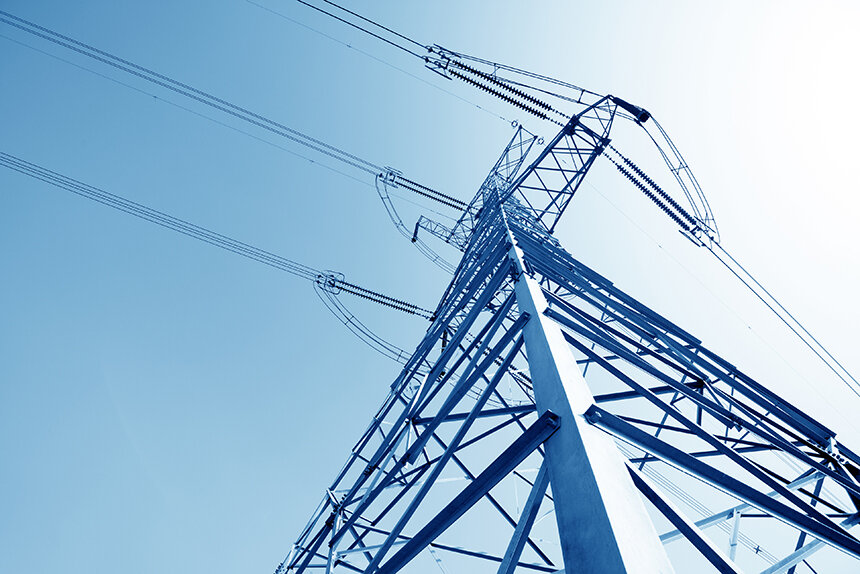Revolution Wind Offshore Power Contract Approved
PUC approval comes without extra payments for National Grid
June 3, 2019
WARWICK, R.I. — The all-important power-purchase deal between National Grid and the owners of the proposed Revolution Wind offshore facility was recently approved, 3-0, by the Rhode Island Public Utilities Commission (PUC). But National Grid didn’t get everything it wanted in the agreement.
The state’s primary gas and electric utility requested annual payments equal to $88 million over the life of the 20-year contract, to essentially boost its balance sheet and stave off what it said would be a possible credit downgrade.
But the three PUC commissioners said they aren’t bound to approve the payments, and that National Grid’s reasoning for the request for remuneration was unconvincing.
“I think simply insufficient evidence was produced to allow remuneration,” PUC chairwoman Margaret Curran said at the May 28 hearing.
The 2.75 percent annual compensation is similar to the rate Nation Grid received by statute from Deepwater Wind’s Block Island Wind Farm. But National Grid’s bid for the Revolution Wind power-purchase agreement (PPA) is voluntary and not a mandated purchase through the state Affordable Clean Energy Security (ACES) Act.
Per the agreement, National Grid will pay Ørsted and Boston-based Eversource 9.84 cents per kilowatt-hour for 400-megawatts of electricity from the offshore wind facility over the entire 20-year contract.
PUC members said the price falls between recent offshore wind power contacts awarded in Connecticut and Massachusetts. The 800-megawatt Vineyard Wind will sell its electricity for 8.4 cents per kilowatt-hour to three Massachusetts utilities. In December, the Connecticut Public Utilities Regulatory Authority approved a PPA for 200 megawatts of electricity from a portion of the Revolution Wind project for a price that hasn’t been made public, but was apparently available to the PUC.
National Grid expects to earn $4.6 million over the 20-year agreement, all of which will come from the sale of renewable-energy credits (RECs).
But the Britain-based multinational hoped to get more.
In a document filed with the PUC, National Grid said the Revolution Wind PPA creates the risk of a credit downgrade, similar to the downgrade of public utility Hawaiian Electric.
PUC commissioner Abigail Anthony, however, noted that the circumstances differ between National Grid and Hawaiian Electric. In particular, a PPA wasn’t cited as a reason for the utility’s credit downgrade by the Moody’s credit agency. Rather, it was based on pension liabilities and falling behind on its mandatory renewable-energy targets.
National Grid isn’t building infrastructure as part of the PPA, just taking the electricity, the testimony noted. The financial risk falls to ratepayers, as National Grid can and does recover unanticipated expenses from regulators.
“And finally National Grid does not convincingly demonstrate that the company is accepting the risk for investing capital,” Anthony said.
The three-member commission agreed that the bidding process conformed with the rules, was open and fair, and adhered to the ACES statute. They agreed that the requirements of the solicitation process were met. They also agreed that the PPA was commercially reasonable, meaning that it showed an economic benefit: some $90 million over the life of the PPA, or about 50 cents per month for the average ratepayer.
Anthony gave her support for the PPA but emphasized the economic risks with the price National Grid is paying and that the benefit to ratepayers isn’t a certainty.
“It’s clearly not a sure bet that the economic benefits will exceed the costs,” she said.
Anthony explained that the contract process doesn’t need to adhere to the state’s least-cost-procurement law that requires lower-cost, energy-efficient measures be taken before new sources of power are created. She noted that solar projects could likely be built more quickly and less expensively than an offshore wind project.
The planned sale of renewable-energy credits, Anthony said, hinges on a predicted increase in the price of RECs in 2027 and 2028. Any financial benefit disappears if the price increase happens six months later than predicted.
She noted that price predictions for RECs are based on projections from ISO New England, the regional operator of the power grid. And that summer demand for electrify, which increase the value of RECs, are regularly overestimated.
Any surplus of RECs will keep their prices from increasing, Anthony said. “The market value of RECs turns on a dime and … so do the direct economic benefits of this PPA.”
But Anthony noted that price of RECs may also increase if regional states increase their demand for renewable energy by setting higher renewable energy goals.
PUC commissioner Marion Gold agreed that there is risk in achieving National Grid’s proposed benefits to ratepayers, but she noted that the PPA price is warranted given that the prices are dropping and large amounts of renewable energy are needed to achieve energy and climate mandates.
“It’s certainly not the most expensive. It’s not the least expensive. It’s a large quantity,” Gold said. “We are expending a lot of money looking for clean energy and associated economic development costs, so from that standpoint, in my mind, Revolution Wind stacks up quite well compared to other projects.”
According to Ørsted, construction of the 50-turbine Revolution Wind project is expected to begin in 2020 and the facility is scheduled to be operational in 2023. The PUC’s Anthony said the commercial operation date is sometime between 2024 and 2028.
The offshore wind facility will be sited 15 miles south of the Rhode Island coast in a federal lease area between Block Island and Martha’s Vineyard. The facility is part of a 700-megawatt project. Connecticut will receive 200 megawatts through Eversource and the Connecticut utility United Illuminating. In December, Connecticut announced that it will receive an additional 100 megawatts from a Revolution Wind expansion project.
Ørsted and Eversource plan to spend $250 million in local stimulus, including $40 million to make ProvPort a construction hub for the offshore wind project. The port at Quonset will be a long-term operations center, according to project officials.
Ørsted plans to invest $15 million in upgrades at the Port of New London to serve as a construction area for the project. A Connecticut-based boat builder will also construct a crew-transport vessel, according to Ørsted.
Categories
Join the Discussion
View CommentsRelated Stories
Your support keeps our reporters on the environmental beat.
Reader support is at the core of our nonprofit news model. Together, we can keep the environment in the headlines.
We use cookies to improve your experience and deliver personalized content. View Cookie Settings



